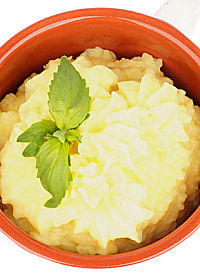![]()
Ingredient Articles
Do All Foods Listing Hydrogenated Oils Contain Trans Fats?
Question: Do All Foods Listing Hydrogenated Oils Contain Trans Fats?
Foods that contain trans fats have "partially hydrogenated oil" or "hydrogenated oil" listed in the ingredients. Before trans fats were required to be listed on nutrition labels, from January 2006, this was our only way of knowing whether these harmful fats were present. Yet a number of products state "0g Trans Fat" or declare themselves to be trans-fat free but still have these oils listed in their ingredients. How can this be?
Answer: There are two reasons why foods containing hydrogenated oils may be labeled trans-fat free, or list 0g trans fats on the label. First, items that list partially hydrogenated oils in the ingredients but contain less than 0.5g of trans fats per serving are considered by the government to be trans-fat free. A good example of this would be commercial peanut butter, which contains a tiny amount of partially hydrogenated oil to prevent separation. The problem with this definition, though, is that if you eat more than the stated serving size, those fractions of a gram add up, and you are most certainly consuming trans fats. Second, products that contain fully hydrogenated oils are trans-fat free. Let's take a closer look at hydrogenation.
Hydrogenation is the chemical process by which liquid vegetable oil is turned into solid fat. Partially hydrogenated oils contain trans fatty acids, or trans fats, which are thought to be more harmful than saturated fats. Trans fats raise levels of bad cholesterol and lower levels of good cholesterol. You can read more on this in my profile of trans fats.
When liquid vegetable oil is fully hydrogenated, however, almost no trans fats remain. The resulting fat is even more solid, taking on a hard, waxy consistency, even at room temperature. Full hydrogenation increases the amount of saturated fat, although much of it is in the form of stearic acid, which is converted by the body to oleic acid, a monounsaturated fat, which doesn't raise levels of bad cholesterol. This makes fully hydrogenated fats less harmful than partially hydrogenated fats.
When Crisco introduced its trans-fat free shortening in 2004, it contained fully hydrogenated cottonseed oil, which was blended with sunflower oil and soybean oil to soften what would otherwise be a too-hard fat. This particular formula was discontinued as it was relatively expensive. Now, Crisco uses soybean oil, fully hydrogenated palm oil, and partially hydrogenated palm and soybean oils. To be clear: just because it is trans-fat-free doesn't mean it is low fat. One tablespoon of trans-fat free shortening contains 110 calories, 12g of fat, 3g of which is saturated. It is cholesterol free, however.
Beware: if a package simply lists "hydrogenated oil," without expressly stating whether it is partially or fully hydrogenated, it may not be trans-fat free. Sometimes the terms "hydrogenated" and "partially hydrogenated" are used interchangeably. If the package clearly states that it contains fully hydrogenated oil, then it will be trans-fat free. Since stricter labeling laws came into effect, trans fats are more transparent than they used to be, and many food manufacturers continue to look for healthier alternatives for their products.
By Fiona Haynes, About.com Guide
Recipes to Success!
Looking for a mashed potato substitute? Craving gravy? Visit our Recipe Section for delicious ideas to perfect your next healthy meal!
![]()
Have you joined the ITG weight loss program yet?
Let us help you achieve weight loss success in a healthy and safe manner!




